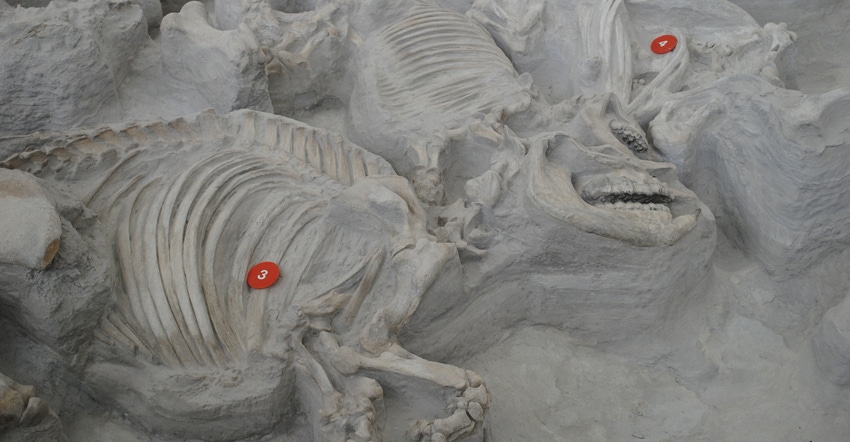
If you have visited Ashfall Fossil Beds State Historical Park near Royal, Neb., you have seen ancient, intact skeletal remains of barrel-bodied rhinos, saber-toothed deer, a giant tortoise and three different kinds of camels.
There are ancient remnants of racoon dogs, bone-crushing dogs and fox-sized dogs. And don't forget the musk turtle, slender-toed horses and stout one-toed horses.
These animals met their fate at a watering hole north of Royal, thanks to the ashfall from a massive volcano that erupted nearly 12 million years ago in what is now southern Idaho. The eruption sent ash across the Great Plains, eventually suffocating and choking animals where they stood. No species became extinct because of that volcano, but it set populations back in specific regions.
Ashfall Fossil Beds is considered as a world-class find and is renowned across the globe. The unique thing about the fossils there is that many of the skeletons are intact, with their last meals in their stomachs and their babies at their side. Ashfall was discovered by paleontologist and Nebraska native Michael Voorhies, while he was out exploring a creek on a farm near his home.
This is only one example of the many significant fossil finds from around the state. What most people don't know is that farmers and ranchers have played a key role in many important finds.
"Nebraska is a fossil-rich state," says Rick Otto, superintendent, Ashfall Fossil Beds. "In the eastern part of the state, typical finds include ice age fossils from bison, horse and mammoth. In central and western Nebraska, older sedimentary rock is exposed, and it is more likely you will find fossils from rhinos, camels, three-toed horses and four-tusker elephants."
Otto says that most of the Nebraska State Museum's fossil collection is the result of farmers and ranchers who selflessly allowed museum paleontologists to collect fossils on their land for donation to the state museum.
"Fossils are a part of our natural heritage," Otto says. "Fossils tell us much about animal life of long ago, and how environments have changed through the years. The University of Nebraska State Museum has one of the largest collections of mammal fossils on earth. Nebraskans should be very proud of our fossil heritage."
Fossils usually can be found in places where severe erosion has exposed bedrock. Gullies, washouts, blowouts and even borrow pits are good places to look for fossils.
"Fossil bones have been buried in the ground for some time, so the bone typically absorbs minerals from the groundwater," Otto says. "The minerals give the bone a color that reflects the color of the minerals that have soaked into the bone, so it isn't unusual for fossil bone to be tan-colored or even chocolate brown. On the other hand, bones from livestock or wildlife will have a whitish or chalky color."
Fossil bones are fragile and will fall apart when attempting to remove them from the ground without taking precautions to protect the bone.
"A fossil bone loses its scientific value if it is removed from the ground without making a record of the rock layers that the bone is buried in," Otto says. "That is why it is best to have a paleontologist from the state museum evaluate the find before attempting to remove it from the ground.”
He recommends a call to Ashfall or any of the Nebraska State Museum sites for help in evaluating fossils in the field, or for donating a fossil to the museum.
"Legend has it that it was a farmer's chickens that discovered the famous 'Archie' mammoth skeleton near Curtis, Neb.," Otto says. "Chickens were scratching at the ground on a steep hillside and exposed the first bones of what turned out to be the king-sized mammoth skeleton that is now on display at Morrill Hall on the university campus in Lincoln."
That find is part of the reason the mammoth is the Nebraska state fossil. "Bones from mammoths have been found in almost every county in the state," Otto says.
For information, call Otto at 402-893-2000 or email [email protected].
About the Author(s)
You May Also Like






